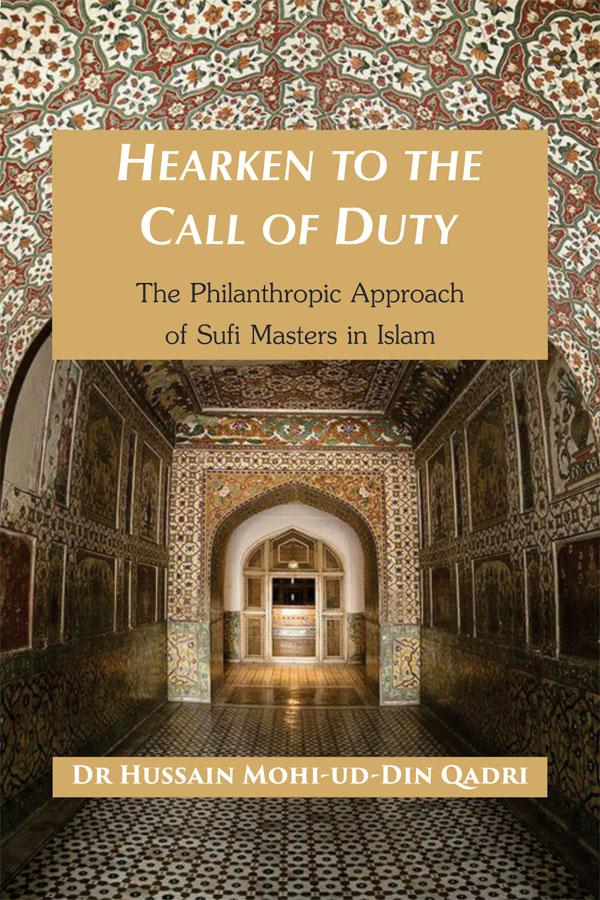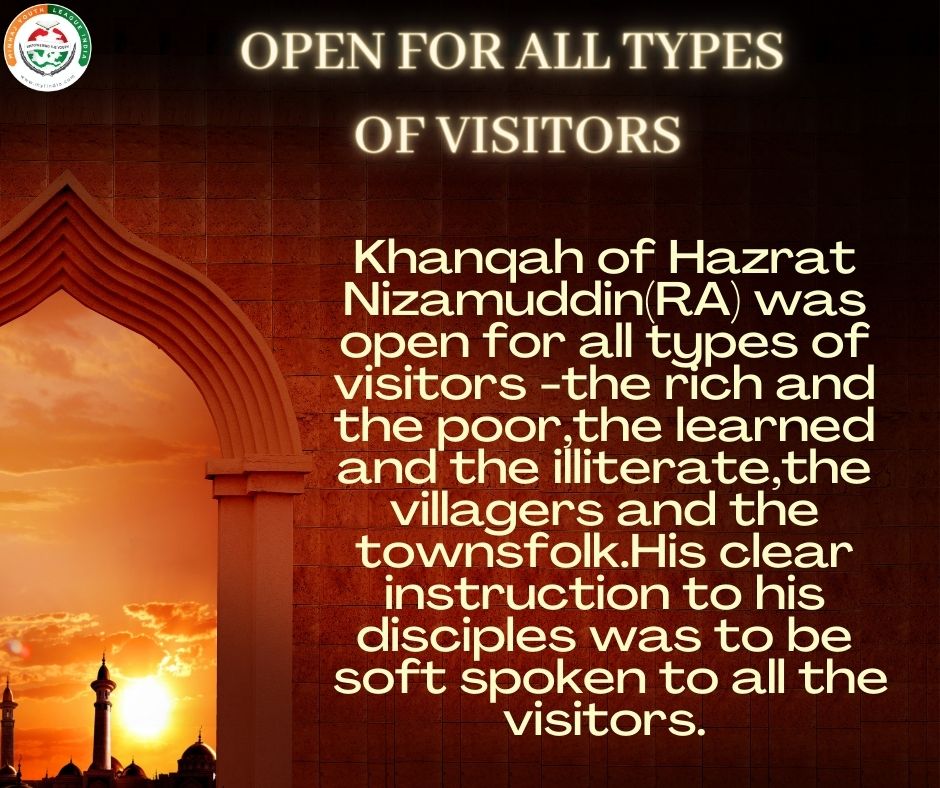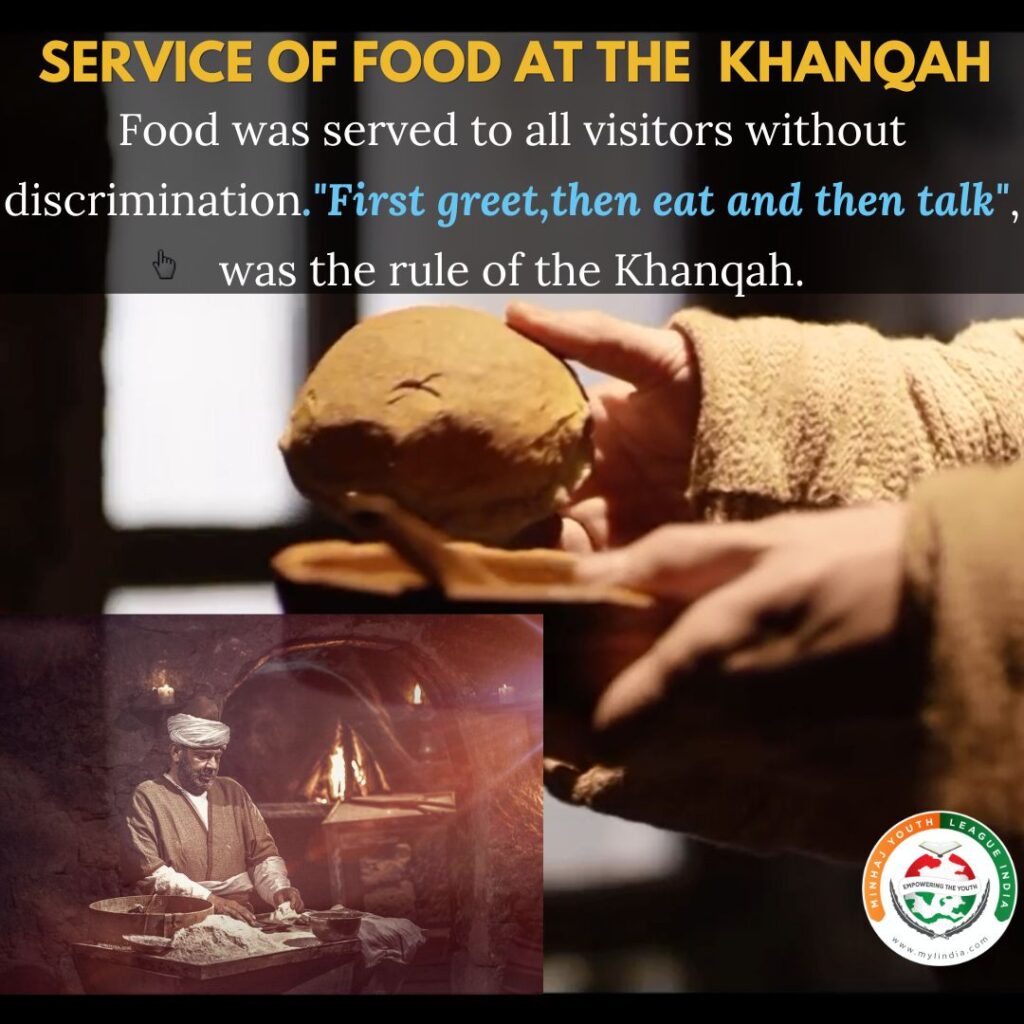Due to their lofty morals, spiritual orientation, compliance with Quran and Sunnah ,Sufi saints are the guiding lights ,symbols of hope, inspiration and guidance for the people of their age. Generally it is thought that the Khanqahs of these sufi saints only quench the thirst of the seekers through spiritual enlightenment and that they have nothing to do with social development. The book by Sahibzada Dr. Hussain Qadri titled “Hearken to the Call of Duty – Philanthropic approach of Sufi masters in Islam” highlights the oft-neglected aspect of the lives of Muslim mystics pertaining to society and aims to portray how their khanqahs served as a center of social welfare.

Shaykh Nizamuddin Auliya (RA) [1244-1325 AD] was one of the most charismatic personalities of South Asia. A scholar with deep insight in religious sciences particularly- Quran and Hadith, a saint whose prayers and fasts cast an aura of serene spirituality on his face; a humanist who spent all his time attending to the problems of the weak and the worried- the Shaykh represented in his person the highest traditions of religion and morality. He was a living light fountain which was pleasant to be near and he enlightened everyone who came near him. His concept of religion gave a revolutionary direction to his religious activity and he identified it with the service of humanity. For more than five decades Shaykh Nizamuddin provided spiritual guidance and service to the people of South Asia.

In this article we highlight the philanthropic services of Hazrat Nizamuddin Auliya (RA) and his Khanqah.
Open for all types of visitors
The Khanqah of Hazrat Nizamuddin Auliya (RA) stood by the side of river Jamuna whose cool refreshing breeze added to the serenity of its atmosphere. The Khanqah was a welfare centre for the entire locality and was not confined to the inmates of the Khanqah. The Shaykh distributed alms and gifts with a generosity that suprised people. His awards extended to the ulema, the nobles and the elite. The Shaykh was the orbit around which the khanqah life revolved and it was a world in itself. Everything derived its hue and colour, its spirit and direction from him. Even the minutest details of its organization had his direct or tacit approval. The whole area of Khanqah had a quiet spiritual atmosphere where visitors came in search of bliss and benediction. He followed the tradition of his spiritual mentor Shaykh Farid(RA) in receiving with equal warmth the new and the regular visitors. Khanqah of Hazrat Nizamuddin (RA) was open for all types of visitors -the rich and the poor, the learned and the illiterate, the villagers and the townsfolk. Sometimes a group of wandering derweshes, comprising twenty or thirty people, came and stayed in the Khanqah. The Shaykh hosted them for three days. He remarked that though there are innumerable ways leading to Him but bringing happiness to the human heart was the surest way to gnosis. His clear instruction to his disciples was to be soft spoken to all the visitors and to treat them with affection. While sitting with the people, the Shaykh did not ignore even the trivial rules of decorum. If he saw people sitting under the sun, he cried out, “They are sitting under the sun, but I am burning from heat.”

Service of Food
Food was served to groups of visitors again and again for hours together. Food was served to all visitors without discrimination. It was difficult to find out who took the food out of need and who as a token of blessing. “First greet, then eat and then talk”, was the rule of the Khanqah. The Shaykh cited a tradition of the Prophetﷺ advising hosts to help personally the guests in washing their hands. The Shaykh used to say that complete silence at the time of eating was the habit of the Jews. He , therefore, carried on light talk while partaking food. The Siyar-ul-Auliya has three chapters which explain principles and practices of the Shaykh pertaining to entertainment of guests, table manners and discouragement of gluttony. The disciples were instructed to remember Allah while taking food. Maulana Fakhruddin said, “In the name of Allah, Most Gracious, Most Merciful” with every morsel that he took. The table rules of the Khanqah were followed by his disciples in different regions.
A Khanqah which provided food and shelter to people on such a large scale had to have a large and efficient establishment to ensure its smooth and regular functioning. The inmates of the Khanqah considered it an honour to render any service in the kitchen. Articles of food were kept in stores of the Khanqah. The stores were under the custody of Iqbal who was a sort of major-domo for the Khanqah. He made the purchases, controlled the stores and supervised the kitchen.

Monthly stipends
The people in general received stipends daily ,or every week or in a month through the Khanqah. Those who lived in the vicinity of Khanqah received daily stipends and those who lived in the city got weekly stipends. Those who came from neighbouring qasbat received monthly stipends. Whoever came after the morning prayer, till the Shaykh retired for mid-day rest got jitals, gold and silver – 10,20,50 or 100-according to his needs. Very good and costly clothes were also distributed and Shaykh also used to send to his disciples in distant areas special robes, prayer-carpets and a large number of caps.
One day the Shaykh saw an old woman drawing water from a well near the river Jamuna. He stopped and inquired from the woman: “Since the Jamuna is so near,why do you take the trouble of drawing water from this well?” The woman replied: “I have an old, destitute husband. We have nothing to eat. The water of the Jamuna is very tasty and induces hunger. Because it quickens our appetite, I do not take water from the river. “The Shaykh was deeply shaken at this explanation, returning to the hospice, he summoned Iqbal and said: “Lalla! In our Gyaspur there is a woman so poverty -stricken that she does not drink Jamuna water for fear of getting hungry. Go to her house, find out her daily needs, and every month without fail give her that amount.”
Support for refugees of Mongol invasion
Shaykh Nizamuddin Auliya’s ancestors had been driven out from Bukhara by the Mongols; in India he had to face the problems created by Mongol invasions. Whenever reports of any Mongol invasion reached Delhi, people began to flock to the Khanqah of the Shaykh for protection. It was a safer place, at some distance from the city and it was under the spiritual umbrella of the saint .They sought refuge within its walls, and the Shaykh did not disappoint them. He provided both food and shelter to these people. At the same time disciples who had come to see him from distant places were asked to shorten their stay in the hospice and to return home. Once Maulana Shams-uddin Yahya, Maulana alauddin -Nili and some other disciples came from Awadh to pay their respects to the Shaikh. At that time great panic prevailed in Delhi due to an impending Mangol invasion. People were running helter-skelter from neighbouring places to hide their heads in Delhi. Hardly four days had passed to the arrival of this group that the Shaykh told them that they had his permission to go back home.

Relief work
One day some houses in Gyaspur caught fire .It was a very hot summer day. The Shaykh was deeply perturbed and rushed to the roof of his house barefoot and stood there till the fire was completely extinguished .He then deputed Iqbal to count the houses that had been burnt. He sent to every house two silver coins, two trays of food and one pitcher of cold water. In those days two silver coins sufficed for buying all the essentials for a household.
Further Reading :-Hearken to the Call of Duty- The Philanthropic approach of Sufi Masters in Islam – Sahibzada Dr. Hussain Qadri The Life and Times of Shaykh Nizamuddin Auliya – Khaliq Ahmed Nizami


